Vet approved
Reviewed & Fact-Checked By
Dr. Paola Cuevas
Vet, MVZ
The information is current and up-to-date in accordance with the latest veterinarian research.
Learn more »
Dogs have sometimes maddening habits that test their owners’ patience. If you landed on this page, chances are peeing on the tires is one of them. We’re guessing that during your daily walks with your doggie, you have noticed that he particularly enjoys urinating on car tires, if not your own car tires at home. But why? In short, it’s a way to communicate with other dogs and leave a record of their “visit.” Let’s take a deeper look at this quirky canine behavior.
For a dog, marking his territory is a fundamental way of communicating with his canine companions. Therefore, when a dog notices that another dog has urinated in a place, he can’t resist leaving his mark too! He takes the opportunity to leave his scent which carries a lot of information for his congeners.
For example, a dog can determine if a female is in heat if a dog is neutered, healthy, or anxious. All from a single urine mark.
So, smells are hugely important to dogs, and if your dog has gotten into the habit of depositing his scent in certain places during his walk, like the neighbor’s tires, he’s likely to want to continue doing so.
Image Credit: KANUT PHOTO, ShutterstockThere’s another simple reason why dogs pee on car tires. For many dog breeds, the wheels are the right height for them to aim and fire away!
Dogs prefer to urinate on vertical objects, like poles and tires, as this allows them to leave their mark at nose height. So, leaving their mark in this way communicates a lot of things, but also the size of the dog. In fact, a very large, long-legged dog may find it more comfortable to urinate on a tree trunk than on a tire, the latter of which may be too low for him.
But in general, the tires are the perfect height for medium and small dogs to relieve themselves and leave their mark after smelling the scent of the dogs that came before them. Also, a vertical object like a tire will retain the smell of pee longer than a puddle of urine on the lawn.
Also, a vertical object like a tire will retain the smell of pee longer than a puddle of urine on the lawn.
Another reason for the powerful attraction of tires to dogs is the overpowering smell of rubber. Indeed, rubber is a material that absorbs other odors, much more than the metal of a car or the concrete of the sidewalk. Thus, a dog that pees on the tires of a car will leave a very fragrant trace for the following dogs, which will have an additional reason to do the same.
It’s quite possible that the behavior of your best furry friend is bothering you, or is perhaps ruining your relationship with your neighbors! In this case, a few solutions are available to you:
Many vehicle owners, tired of dogs relieving themselves on their rims, buy dog repellent for their cars.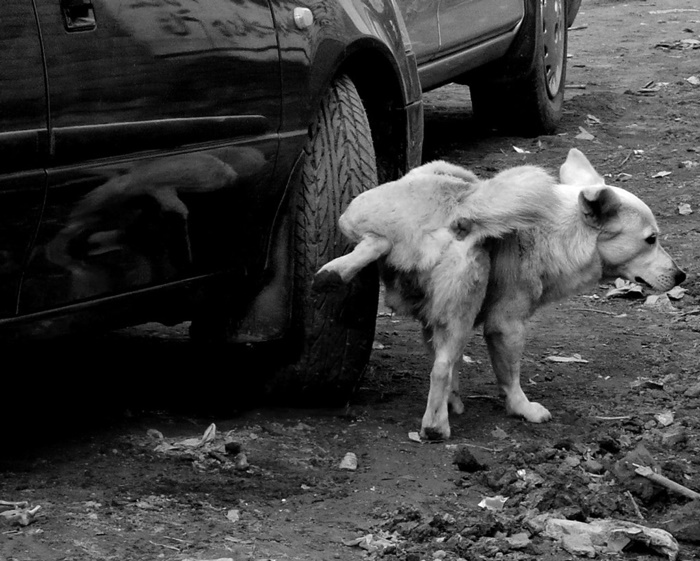 This kind of repellent is sprayed or sprinkled on the tires, covering the smell of rubber with an unpleasant odor for the dog, without being dangerous for the animal.
This kind of repellent is sprayed or sprinkled on the tires, covering the smell of rubber with an unpleasant odor for the dog, without being dangerous for the animal.
You can also make it yourself, by mixing ingredients such as mustard, coffee grounds, or even pepper with white vinegar, which is particularly fragrant and effective in disinfecting and masking the powerful smell of dog pee.
Another good option is an enzyme cleaner:
No matter how hard you try, pets will always leave you cleaning up smells, stains, vomit, hair, and everything in between. With the Hepper Advanced Bio-Enzyme Pet Stain & Odor Eliminator Spray, you can advance your clean-up routine!
It permanently removes the very worst pet stains and smells (and truly makes clean-up a breeze). Click here to learn more, order a bottle, and freshen up your home today.
At Pet Keen, we’ve admired Hepper for many years, and decided to take a controlling ownership interest so that we could benefit from the outstanding products of this cool cat company!
 Use Avoidance-Based Strategies
Use Avoidance-Based StrategiesIf it bothers you that your dog urinates on the wheels of cars on your walks, you can use avoidance strategies. It’s very simple: you just have to avoid walking your dog near parked cars, preferring places like parks. Also, you should always keep your pet on a leash.
However, don’t scold your dog when you catch him in the act. Indeed, if you strongly reprimand your dog when he leaves his mark on the tires, he may believe that you are punishing him for urinating. Misinterpreting the message could cause your dog to refrain from peeing, leading to anxiety and accidents around the house.
Quick Tip: Always carry a bottle of water with you, so you can quickly rinse the rims and tires of the car your dog has chosen to mark!
Dogs don’t discriminate where they pee. Any place can do the trick, but when it comes to car tires, it’s like a big feast of smells that tickle your pooch’s nostrils! Impossible for him to resist: he must leave his mark so that his canine companions know that he has been there too!
See also:
Featured Image Credit: Sanit Fuangnakhon, Shutterstock
You approach your house and park your car in your garage, then all of a sudden your dog starts smelling one of the wheels of your car and pees on it. This is actually a common scenario for those people who have dogs, some would even experience this when parking on side streets where stray dogs are often found. Aside from dealing with its putrid odor, it can actually damage your wheels given the chemical properties it possesses such as ammonia, which is a byproduct of urine breakdown.
This is actually a common scenario for those people who have dogs, some would even experience this when parking on side streets where stray dogs are often found. Aside from dealing with its putrid odor, it can actually damage your wheels given the chemical properties it possesses such as ammonia, which is a byproduct of urine breakdown.
Related: How NOT to clean your car's wheels
Most of us love our cars as much as we love our furry friends, and we definitely don’t want to end up abandoning them just because of this minor conflict. Instead, we’re going to help you further understand the situation and find a suitable solution for this.
Many experts claim that dogs pee on your car’s tires and wheels because many scents are gathered on the rubber as you drive through different places. Dogs, by nature, are very territorial animals, and that’s another reason why they pee on tires in order to mark their “area”, therefore allowing them to leave their scent at ‘nose height’ for other dogs.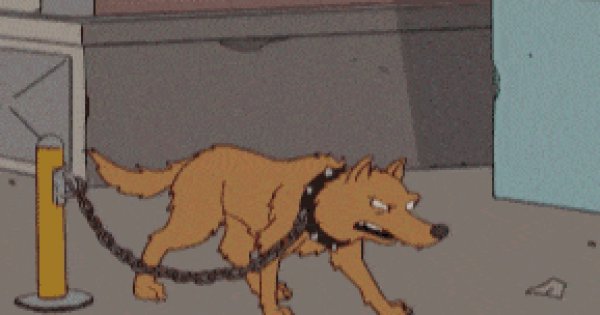 Moreover, dogs prefer going for vertical level targets before taking aim, and a tire actually serves as a good example, plus, the scent lasts much longer on a vertical surface as compared to a horizontal one.
Moreover, dogs prefer going for vertical level targets before taking aim, and a tire actually serves as a good example, plus, the scent lasts much longer on a vertical surface as compared to a horizontal one.
Dog urine can potentially damage your wheel's paint given the chemical properties it has. It’s wet and corrosive but rubber is resistant to it, which means your tires are free from any possible damage. The only effect on your tires is the bad scent that it will have which should be gone once you wash the rubber. That said, you’re just going to have to protect and take extra good care of your wheels to avoid the formation of rust on its paint in the future. In order to do that, kindly consider the following solutions we have for you below.
While we can’t force dogs to stop, there is a way on how you can prevent them from exposing your car’s wheels and tires to dog urine. Covering your wheels can actually help you protect them from your dog’s urine, you can actually purchase a water-resistant dog cover. Just make sure to have it washed from time to time in order to avoid a bad smell. For those who can’t buy one, you can actually consider using other alternative covers, like say a tray that you don’t use anymore, or perhaps extra plywood or cardboard at home. Just make sure that all four wheels of the car are safely covered in order to protect it from the toxic urine of your dog.
Covering your wheels can actually help you protect them from your dog’s urine, you can actually purchase a water-resistant dog cover. Just make sure to have it washed from time to time in order to avoid a bad smell. For those who can’t buy one, you can actually consider using other alternative covers, like say a tray that you don’t use anymore, or perhaps extra plywood or cardboard at home. Just make sure that all four wheels of the car are safely covered in order to protect it from the toxic urine of your dog.
If your dog has peed on your tires or wheels, immediately splash it with some water. Don’t let it sit there exposed to urine for too long as it can have a long-term effect on your wheels. If you happen to have the extra time, clean your tires and wheels thoroughly with a cleaning solution in order to totally remove the toxic chemicals on them.
View More Articles
Oct 20, 2022
Jun 18, 2021
Earl Lee · Jan 12, 2021
Bryan Aaron Rivera · Nov 27, 2020
Joey Deriquito · Nov 19, 2020
Jul 20, 2022
 Suzuki XL7
Suzuki XL7 Joey Deriquito · Oct 28, 2020
Earl Lee · Nov 10, 2020
Joey Deriquito · Oct 16, 2020
Joey Deriquito · Nov 26, 2020
Author: Innokenty Kishkurno
Yes, yes, another topic from the category of “everything is clear” – no matter how many articles are published, but mistakes are still made. How to ride with a dog so that it is correct and comfortable? For some, repetition, and for someone - the assimilation of completely new material. Important note: everything is tested on myself.
It's unbelievable how many people continue to be touched by how their dog sits in the front passenger seat completely unfastened, or even tries to climb onto the driver's lap, or how the dog sticks its head out the open window, sticking out its tongue. All this is cool only in pictures from the Internet, in reality, such things can turn into disaster.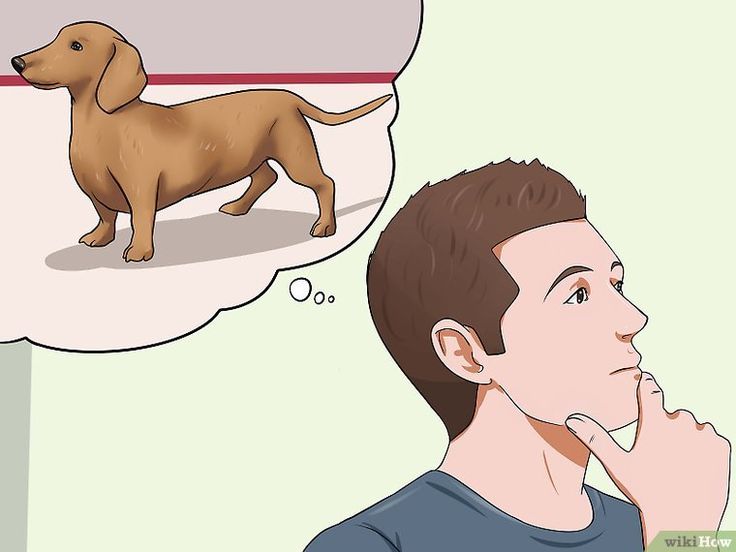
Partly disregard for the transportation of dogs has formed legislation - in terms of transportation, the SDA equates pets with luggage. Thus, only one requirement remains: the load should not restrict the driver's visibility and interfere with driving. At the same time, it is quite obvious that it is one thing - a suitcase with things, and quite another - a living being, sometimes comparable in weight and dimensions to a person. Ten years ago we already wrote about dogs in the car, but now it's time to supplement and improve the indicated rules.
One of the biggest problems with dogs in cars is the behavior of the animal. Only one thing can fully guarantee the calmness of a dog in a car - his own ingrained habit of the car. So once you get a puppy, take him on any trip you can. But remember - the first trip should not be associated with something unpleasant, like a visit to the vet. Well, if this happened, do not take your pet to the clinic right away - take a walk, give a treat, scratch behind the ear - to break the “car-trouble” association.
And even if you don't have a car yet, but you already have a puppy, take it on public transport. It will come in handy in a couple of years when you buy a car and the cute little dog turns into a woolly Godzilla.
If you can't get used to the car at a young age, you can catch up in adulthood. Bring the dog to the car, let him look around, start the engine. Put your hand on the roof of the car - the dog will take it in such a way that the owner is in charge here, everything is under control. Loading from the cabin should only take place on command - you can use “place”, “let's go”, “jump” as keywords.
If the dog does not want to get into the car at all, you can put a piece of treat inside or put a friend whom the dog trusts.
Do not rush to slam the door, the animal needs to look around and get used to the new territory. Unloading - only on the command "to me" or "let's go."
Give it some time, because the four-legged car enthusiast - whether a car-accustomed puppy or a "new convert" - must learn these simple rules.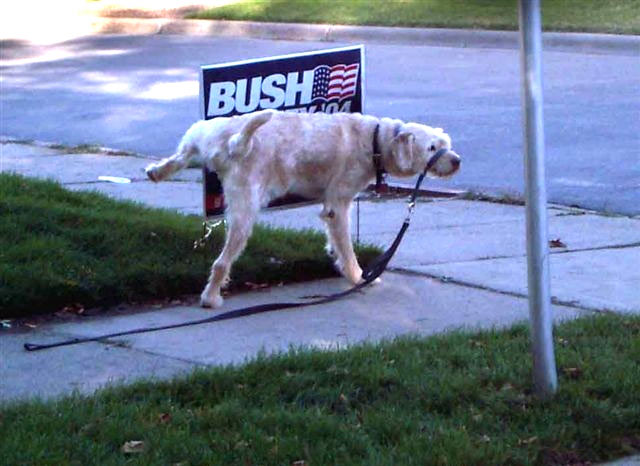 Otherwise, one day he will happily jump into the neighboring Gelendvagen, mark the steering wheel there and wait for praise from you.
Otherwise, one day he will happily jump into the neighboring Gelendvagen, mark the steering wheel there and wait for praise from you.
The dog must never move freely in the cabin. If you have a small dog, then the way out of the situation suggests itself - get a box carrier and transport the animal only in it. Choose the maximum size box that can fit - this is necessary for the box to be fixed - or secure the carrier with special straps. If the animal is large, then here are the options for how it can be fixed in the cabin.
The easiest way is to wrap a leather or cloth leash around the rear seat head restraint pins, leaving a free length of 30–50 cm, and clip it into the collar with a carabiner. The second option, more reliable: purchase a harness (helmet) and fasten it to a standard seat belt. Harnesses are ordinary and automobile - in the second case, there may be a latch that is inserted into the standard seat belt buckle. In addition, now special dog harnesses are beginning to appear on sale, made on the principle of a harness, but much more restricting the movement of the animal.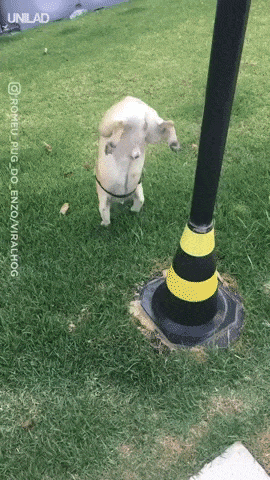
If you have a hatchback or station wagon, and the animal travels in the trunk, you can additionally install a partition (such partitions are universal and fit any car) separating the "dog compartment" from the rest of the cabin. If the trunk allows you to place a large metal cage, then it makes sense to go for this option.
Yes, this sad face in the mirror now looks like a prisoner, but it is sad only because it is deprived of the opportunity to lick the ears of the rear passengers. Don't worry, she'll take her.
A small but very important "preview" to this item: never leave your pet in the car for a long time. In winter, this is fraught with hypothermia, in summer - heat stroke, and in both cases can lead to fatal consequences. Tinted the rear window, and preferably the entire “rear hemisphere” - this will have a very positive effect on the microclimate of the rear of the cabin in the warm season. And now - to the point.
If your vehicle is equipped with air conditioning, do not try to refuse it in the heat because of the fear of catching a cold - the dog endures the increased temperature in the cabin much harder than you. And the desire to cool off, leaning out of the window carefully opened by the owner, will turn into a disease for your pet - as a result of such a “natural airflow”, you will not protect yourself from a cold, but reward your dog with it. And this is not so bad - sticking out the window threatens the dog with otitis media or conjunctivitis, as well as the likelihood of "catching an oncoming stone in the face" or simply falling out of the passenger compartment during a sharp maneuver - this happens even with fastened dogs.
If the windows in the car are still open while driving, then try to make sure that the draft does not walk around the cabin (do not open all the windows to the fullest), and place the dog and fix it away from the window. Ideally, purchase a special grille for windows - it expands to any height of the glass lowering, and when folded it takes up a minimum of space . .. at the crossroads to the biker.
.. at the crossroads to the biker.
Another big issue is dog hair, which inevitably remains in the cabin. There are several ways to eliminate or at least reduce the influence of this factor on your comfort. If you are transporting a rather large dog in the back seat, you can simply cover it with a large rag, but the option is bad because the rag will inevitably go astray, and in general it does not protect against hair by 100%. The second option is a factory seat cover. Better yet, an auto-hammock, which is attached to the front and rear headrests, covers not only the cushion and back of the rear seat, but also the back of the front seat, and fences off for the pet, depending on the size, the entire rear seat or half of it. There are also disadvantages: in most cases with an autohammock, you lose the opportunity to fasten the animal by the seat belt.
When placed in the trunk, the methods are similar: independent “draping” of the luggage compartment or buying a special canopy. There are also more radical options - for example, to alter the interior of the car (or just the trunk) into a special "anti-vandal" eco-leather, now this furniture fabric is gaining popularity: it cannot be damaged with claws, and all wool is easily removed from it with a simple brush ...
There are also more radical options - for example, to alter the interior of the car (or just the trunk) into a special "anti-vandal" eco-leather, now this furniture fabric is gaining popularity: it cannot be damaged with claws, and all wool is easily removed from it with a simple brush ...
В in general, you should do at least something so that there is no situation when car wash workers, seeing you, scatter with shouts of “fire me, but I won’t clean this salon!”
According to statistics, about 30% of dogs get sick on a long journey, regardless of whether they have a habit of transport or not. Yes, your pet may experience nausea and vomiting, so stock up on diapers, napkins, garbage bags and water, as well as special remedies for motion sickness - you will find Reisfit or its analogues in the veterinary pharmacy. Someone uses the usual "human" Aeron or Kinedryl, but the author of this text has no such experience.
Veterinary medicine prescribes not to feed the animal at all on the day of the trip, but to give water two hours before the start. In practice, these rules are not always possible to comply with - for example, your trip may last more than one day .
In practice, these rules are not always possible to comply with - for example, your trip may last more than one day .
On a long journey, you should adhere to the following: feed and water the animal in very small portions (for adult dogs, two or even one meal is enough), stop and walk for 15-20 minutes every 2-3 hours. In addition, you need to properly walk the dog just before the trip. And then, you know, morning cutlets can make a big commotion.
On the road you decide to share with your dog, you should have with you: a veterinary passport (just in case, because, strictly speaking, it is checked only on hunting dogs), dog food (canned food is preferable dry food - more convenient to transport), treats, water, bowls, disposable diapers, napkins, garbage bags, spare leash and collar, a couple of toys, motion sickness remedy, bandage, tourniquet, band-aid, antiseptic (the last four items are in the car first aid kit).
A dog is able to enjoy car rides no less (or even more!) than a person.If everything is done correctly, you will have many good minutes ahead of you, spent in overcoming the space together. It's no secret that this furry ball of chaos loves you very much. So repay him the same.
practice
Test drives / Test drive Haval Dargo vs Mitsubishi Outlander: the dog is barking, the stranger is coming In the Haval dealership in the south of Moscow, life is in full swing: buyers look at cars, communicate with managers and sign some papers. While I was waiting for the test Dargo, the same cross... 17745 7 205 13.09.2022
Test drives / Test drive Motor from Mercedes, emblem from Renault, assembly from Dacia: test drive of the European Logan 1. 0 It would seem that what's new can be told about the second generation Renault Logan, known to every Russian taxi driver, as they say, up and down? However, this car has... 14279 ten 41 08/13/2022
0 It would seem that what's new can be told about the second generation Renault Logan, known to every Russian taxi driver, as they say, up and down? However, this car has... 14279 ten 41 08/13/2022
Test drives / Test drive Geely Coolray vs Haval Jolion: Free Cheese? If! Do you want to buy a car today with a full warranty, on credit at an adequate rate, without wild dealer markups? Now this is still a task, because a full-fledged chain of "representation - s... 11460 26 thirty 08/10/2022
Some dogs like to chase fast moving objects, including vehicles. You can watch a dog that sees a car prancing and rushing in pursuit. Stray dogs can often be seen deliberately waiting for a car and then jumping out into the roadway barking. If your ward at least once succumbed to such a temptation, you must take action. Let's figure out how to wean a dog to run after cars.
You can watch a dog that sees a car prancing and rushing in pursuit. Stray dogs can often be seen deliberately waiting for a car and then jumping out into the roadway barking. If your ward at least once succumbed to such a temptation, you must take action. Let's figure out how to wean a dog to run after cars.
Car chasers very often get seriously injured and die under the wheels. In addition to damage to the health of the dog, you need to understand that an animal that jumped out onto the road abruptly can provoke an accident in which people will suffer or die.
You may decide to only lead your dog on a leash, but that won't fix the problem. On each walk, your pet will be overexcited by irritants and suffer from limited will. After each walk, the dog will be convinced of his intentions and in the end, he will fall off the leash, and there is nothing you can do.
Please note! Desire to chase vehicles, this is a dangerous and difficult to eliminate condition.
In acute situations, it is better to contact a dog handler or an experienced trainer.
Most often stray dogs bark at passing cars and cyclists. Among thoroughbred pets, decorously walking on a leash, the percentage of such individuals is negligible. This makes it possible to consider such behavior as a sign of the dog's aggressiveness, which is practically not found in domestic individuals due to their socialization and upbringing (and breed qualities, which largely exclude aggression).
In addition, the selection of cars and cyclists as objects of special dislike for dogs is conditional. Many of them with the same zeal rush after skateboarders, rollerbladers, joggers, and sometimes any moving object.
The theory that explains this behavior with the greatest degree of probability is very simple - the hunting instinct “works” in dogs, which makes them catch up with any fleeing objects.
By the way, that is why when you meet a stray dog that shows signs of aggression, it is highly recommended not to turn your back on it and leave, let alone run away from it.
The reaction is too predictable - it will catch up and rush.
But there are other reasons that try to explain this behavior of some dogs. Many of them have a right to exist:
All versions sound plausible, but perhaps in each case one of them plays a big role.
Watch this video about how to stop a dog from barking at cars:
Similar articles0134 Recommendations on how to wean a small dog from jumping: Often, households take a cute little puppy for the first time ... A special technique will help to wean a baby from jumping for a greeting: upon entering the room, you should immediately put your bag and things on the floor and squat or kneel. Read more
How to wean a dog from barking at night: From a puppy's age, a dog must be trained to the “Quiet” command. … Experienced dog breeders and cynologists recommend the following methods to owners of noisy pets on how to wean a dog from barking at night: From puppyhood, the dog must be taught to the “Quiet” command. Read more
Read more
The dog will run after the owner with pleasure. You can diversify and complicate the exercise with obstacles. … The dog will also like such domestic fun as learning to count. For this, the same items are used. The dog "counts" objects - it gives a voice at the owner's prearranged signal... Read more
If the dog is afraid to walk, then simply overcoming this fear will not work. First you need to establish the cause. For example, if she is suddenly frightened by sharp sounds, other dogs, or is afraid to walk in the street in the evening, then the approaches will ... Read more
How to wean a dog from being afraid of people on the street. Faced with an inadequate response, the owner must identify not only the cause of the strange .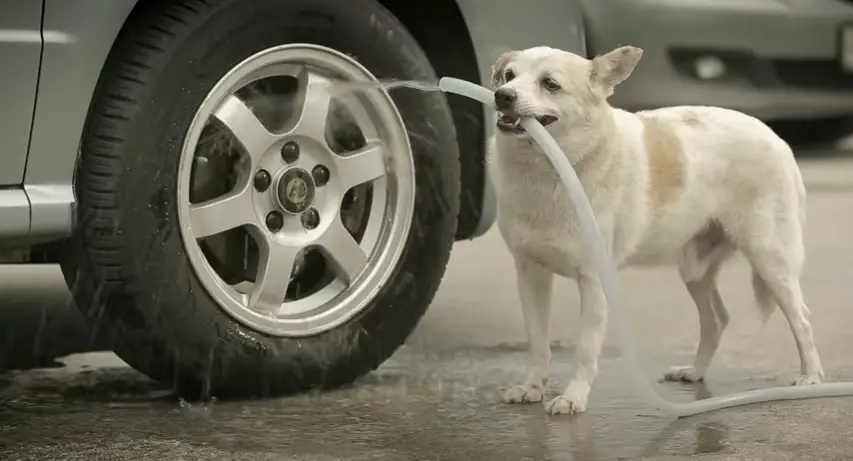 .. With the problem of how to wean the dog from being afraid of people, the owner will have to work long and patiently. In a situation where the dog is running away from a “scary” object, don’t… Read more weaning process. Otherwise, walking with him will turn into a kind of test for you. Here is what cynologists advise:
.. With the problem of how to wean the dog from being afraid of people, the owner will have to work long and patiently. In a situation where the dog is running away from a “scary” object, don’t… Read more weaning process. Otherwise, walking with him will turn into a kind of test for you. Here is what cynologists advise:
The main task of all these exercises is to raise a pet that is focused only on you. Then, over time, he will stop worrying about running people and driving vehicles.
Then, over time, he will stop worrying about running people and driving vehicles.
Animals, like people, often adopt habits from each other. So try not to let your pet see other dogs running after the car.
Train your puppy to react calmly to vehicles. Take him in your arms and come closer to the car. The puppy must understand that there is nothing wrong with him, then the desire to drive away the “monster” will not arise.
Make sure that your pet obeys your commands in all conditions. Ask a friend to accompany you on a walk. Have this person distract the dog while exercising outside. You must ensure that the animal does not pay attention to your friend, but immediately executes commands.
Favorite toy is used not only for weaning from "catching up". The method is also good for preventing the emergence of a bad habit. If your dog does show interest in cars, you can immediately distract him with a favorite toy.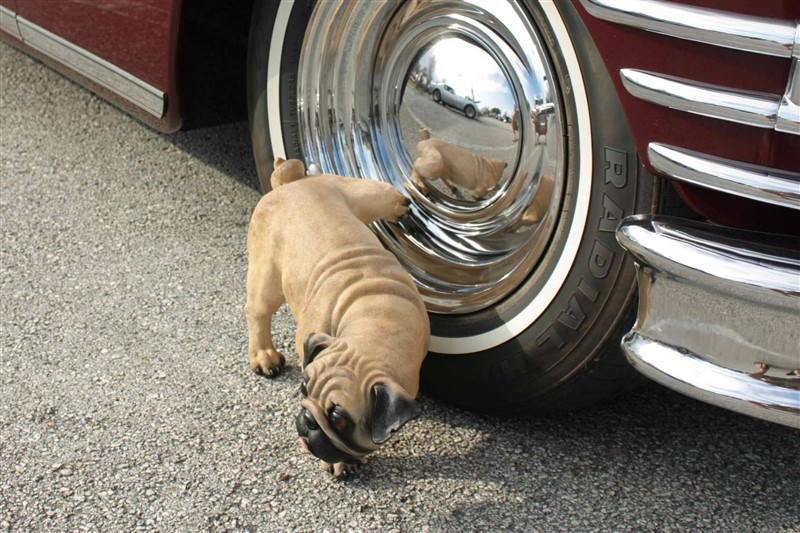
 It is important to maintain eye contact with your pet.
It is important to maintain eye contact with your pet.
With these signals, the dog says that it is better not to interfere with it
Never touch or stroke an aggressive dog
Until you are sure that your pet is under control, it is wiser to take all available precautions to ensure its safety. Do not let your dog off the leash if you are in a crowded area or close to a road. Choose remote places for walks and try to find a partner for your pet to play. Exhausting physical activity should be used as a preventive measure for shoots. A tired dog does not react as sharply to stimuli in the form of moving objects.
Do not let your dog off the leash if you are in a crowded area or close to a road. Choose remote places for walks and try to find a partner for your pet to play. Exhausting physical activity should be used as a preventive measure for shoots. A tired dog does not react as sharply to stimuli in the form of moving objects.
The use of stun collars (ESCs) to prevent escape is strongly discouraged. A discharge of current can further inflame the hunting instinct of a pet.
Your dog will be in danger if he escapes. Be sure to purchase an address tag for your pet, which is hung on the collar. If someone finds your pet, there is a good chance that you will be contacted. Modern technologies make it possible to purchase collars with GPS sensors that can be tracked from smartphones. The exact location of the dog is not guaranteed, but at least you judge the search radius.
Tip: teach your dog to call (command to me) from an early age. You need to pay special attention to working out commands if you are raising a puppy of a hunting breed.
You need to pay special attention to working out commands if you are raising a puppy of a hunting breed.
Each time the pet gives up the intention to jump on the car, it should be actively praised. A dog that obeys the owner's command should be given a treat.
But praise and encouragement only make sense when certain results are actually achieved. If there are obvious problems with obedience, it is advisable to start with negative reinforcement and working out the reaction to commands. Do not expect positive results in a short time. It is necessary to give enough time and effort to training to get a well-mannered animal.
How to stop a dog from running after cars? The animal's habit of chasing moving objects is quite dangerous. Often such pets are seriously injured or die under the wheels.
In addition, the dog can learn to run not only after cars, but also after cyclists and joggers. In many cases, this ends up inflicting bites, and the owner has to bear responsibility for the behavior of his pet. How to stop such actions of the animal?
In many cases, this ends up inflicting bites, and the owner has to bear responsibility for the behavior of his pet. How to stop such actions of the animal?
Are there special training methods for this? We will consider these questions in the article.
[custom_ads_shortcode3]
Timely punishment makes sense - when you see that your pet is tasting a slipper, look at him strictly and say: “No!”. As soon as the baby spit out the thing, give him a toy, saying: "Good, good girl."
After returning from work and finding a destroyed chair, do not scold the dog, it makes no sense. However, you should still show your displeasure - do not talk to the dog, do not stroke it. Remove the traces of the crime and go about your business, ignoring the dog for at least half an hour.
It is common for dogs, especially at a young age, to get carried away chasing moving objects. Hunting dogs are especially prone to this behavior. If the behavior of the animal does not intersect in time, the object of the dog's attention may be a cat, a car, a bicycle, a moving person or a child.
If the behavior of the animal does not intersect in time, the object of the dog's attention may be a cat, a car, a bicycle, a moving person or a child.
Almost all dogs are naturally very hardy, even if they don't look like that. Quadrupeds have evolved along with humans, but have retained hunting instincts that help them survive without the help of people. The survival of wild dogs directly depends on the instinct of pursuit and endurance. Our pets are not so distant relatives of wild canids.
The urge to chase moving objects is an instinct that most dogs have great difficulty controlling. The natural hunting habit that comes out every time a dog chases a fetch is also the stalking instinct. In the process of evolution, people have selected dogs that will participate in breeding activities. Thus, breeds of different orientations were bred.
Hunting, gun and especially hound dogs were deliberately instilled with the desire to chase moving objects.

Regular car and bicycle chases show that big dogs have nowhere to put their energy. At a time when the instinct of pursuit was actively instilled in dogs, most quadrupeds were engaged in hunting. Modern urban dogs have nowhere to throw out energy if the owner does not take care of the pet's physical activity.
When correcting the behavior of dogs, serious difficulties arise with greyhounds, terriers, hounds and other breeds that are bred to search for, pursue and attack small animals. Untrained pets of these breeds can be a danger to small animals, such as cats. Deliberately attacking people is a rarity. However, if the dog chases the runner, catching up with him, he may bite, following instinct.
Many hunting dogs, following their instincts, can not only chase small animals, but also kill them.
As practice shows, most bad habits in dogs are developed for two reasons: a low level of socialization and unintentional encouragement of the owner. If your dog is behaving inappropriately, you should actively express your dissatisfaction. Never praise a puppy if it is chasing a cat or other animal. The exception is games with relatives on the training ground.
If your dog is behaving inappropriately, you should actively express your dissatisfaction. Never praise a puppy if it is chasing a cat or other animal. The exception is games with relatives on the training ground.
It is important to understand that the dog is your property and you are fully responsible for its behavior. If your pet chased a person and bit him, the owner who allowed the chase is responsible for the injuries. In addition to the risk of prosecution, pet escapes can result in death or injury. You cannot be sure of the adequacy of the people around you. Not all people love dogs and can harm them intentionally.
Most hunting dogs, pursuing their targets, do not hear commands and do not notice the danger around them.
It's easier to prevent a conflict or dangerous situation for your pet than to punish him for his misconduct later.
To prevent your dog from lashing out at a passerby or a passing car, try to keep him busy during the walk. For example, your favorite game or training.
For example, your favorite game or training.
If the dog tries to attack a strange person or car, try to get it away from there as soon as possible, and then distract it by playing or repeating commands.
Often it is the behavior of the owners that causes the dog's aggression caused by fear. For example, when the owner sees an unfamiliar dog on the other side of the street, he himself pulls on the leash, drags the dog closer to his feet, or tries to take a detour. The dog perceives this behavior as fear, and automatically begins to protect the owner and is ready to fight.
Owners should pay attention not only to their pet, but also to their own behavior in a stressful situation. Perhaps it is the correct reaction on the part of the owner that will solve the problem.
Additional information! In this case, it is best to distract the dog to something positive. For example, to interest her in a toy or treat. Then she will have no reason to snap and rush at her relative.
Then she will have no reason to snap and rush at her relative.
A well-bred pet always clearly reacts to the owner's commands that prohibit certain actions. Gradually, the dog learns what behavior is unacceptable, and ceases to demonstrate it.
Usually, it is enough for a person to say the commands “No”, “Fu”, “Come to me” for the animal to give up its intention to jump onto a passing car. But unintelligent puppies and undisciplined adult dogs often do not respond to prohibitions, putting their lives in danger. In this case, more serious measures must be taken.
[custom_ads_shortcode3]
If the usual barking is replaced by a very unambiguous growl, or if the attackers are a whole pack, you need to be ready for war. With the proper level of training, a person always comes out of it as a winner:
